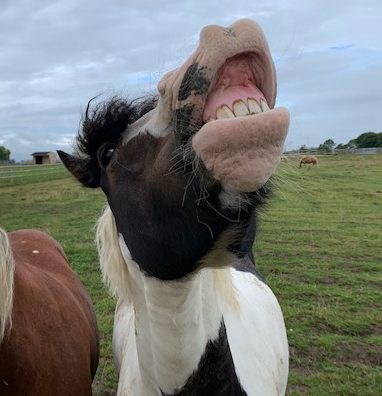Laminitis is often associated with the warmer weather and fat ponies – but all horses have the potential to get it.
It is a very painful condition affecting the horse’s feet and in extreme cases, can be fatal.
Too much grass, stress, illness, inflammation and age are just a few of the causes.
All owners need to be on the lookout for signs their horse or pony might be developing laminitis, particularly at this time of year (spring) when the grass is very rich.
The main signs to look out for are:
- Lameness, often in all four feet, although the front often seem worse;
- One of the earliest signs may be a shorter stride;
- The horse can find walking on hard or stony going uncomfortable;
- Lameness can show on hard ground and turns;
- Weight shifting between feet when resting;
- An increased digital pulse at the back of the pastern/fetlock can be felt with your hand;
- Warmer than normal hooves;
- Horse stands leaning back onto its heels;
- Topline/crest (trapezius muscle) of the neck feels hard and chunky.
In general, ponies tend to be more susceptible than horses.
A fresh surge of grass at any time of year is the most common cause, as well as grazing when the grass is under stress (such as after frost or severe overgrazing) and horses that are overweight.

Control your horse’s grass intake by fencing off sections of the field.
Always speak to your vet if you think your horse has laminitis. If you notice clinical signs including a slightly shorter stride, reluctance to move, weight-shifting or feel a pounding digital pulse, call your vet immediately.
It is so important to quickly implement a treatment plan suitable for your equine and their environment.
For further information go to: https://bransbyhorses.co.uk/what-we-do/equine-advice/equine-obesity-3

